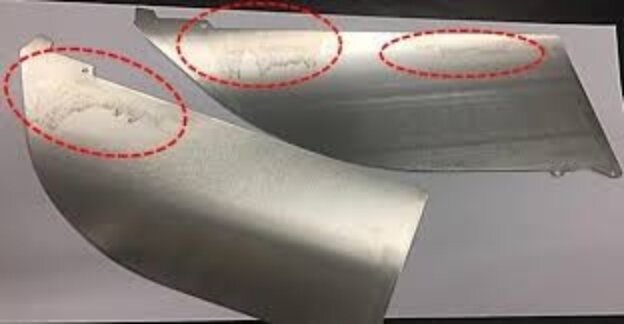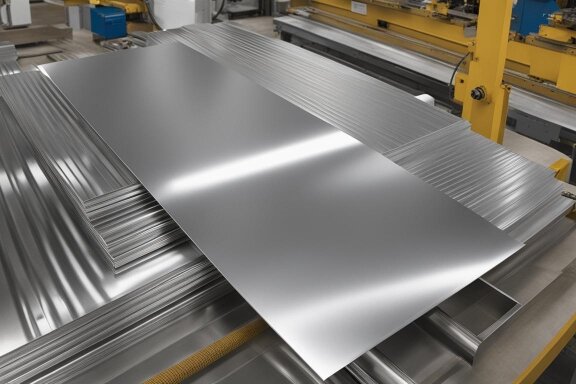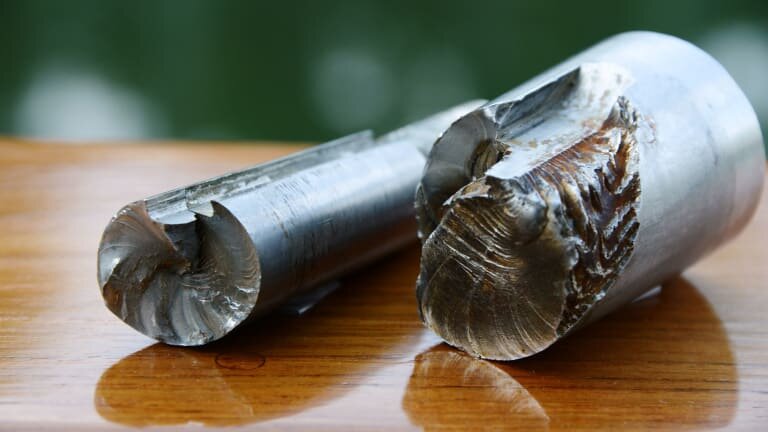Long welds often lead to distortion and cracks. These defects can ruin parts, waste production time, and increase costs. Many workshops face challenges in controlling heat and stress during welding. If the welds pull or twist, the finished parts may not fit or perform as intended.
Backstep welding offers a way to solve these problems. It helps keep parts straight and welds strongly. This method works well when you want cleaner, flatter, and more consistent results. Let’s go over how backstep welding works, when it is most effective, and the basic steps to start using it.
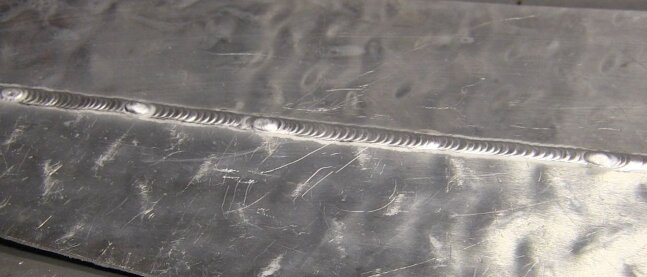
What is Backstep Welding?
Backstep welding is a method where the welder works in short sections, moving in the opposite direction of the overall weld path. For example, if the finished weld runs from left to right, each small segment is welded from right to left. The new bead overlaps slightly with the previous one.
This approach helps limit heat buildup and control distortion. The metal stays flatter, and the risk of cracks is reduced. It works especially well for thin materials, long joints, and assemblies that need tight dimensional accuracy.
Fundamental Principles
Backstep welding works by splitting a long weld into smaller sections. Each section is welded in the reverse direction. This shift in direction helps control how heat spreads and how the metal pulls as it cools.
Step Sequence and Welding Direction
The main idea is simple. The welder lays down short weld beads that move backward, opposite the final direction of the joint.
Let’s say the weld needs to go from point A to point B. The welder starts at point B and moves back toward A for a short segment, maybe an inch or two. Then, they skip ahead and repeat the same step. Each new bead overlaps the last one slightly.
This creates a steady, step-by-step pattern. The weld moves forward overall, but each small segment goes in reverse. This method helps spread stress and reduces distortion.
Role of Heat Distribution and Control
Backstep welding helps reduce heat buildup in one direction. Because the welds are short and spaced out, each area has a bit of time to cool before the next segment starts.
This creates a zig-zag heat pattern instead of a straight one. The base metal stays more stable because the heat isn’t all pushing in one way.
That means less warping, twisting, or pulling—especially in thin sheet metal. Thin material moves a lot when heated, so this control really helps.
By spreading the heat and stress, this method also lowers the risk of cracks. The weld holds its shape better, and the finished part fits more precisely.
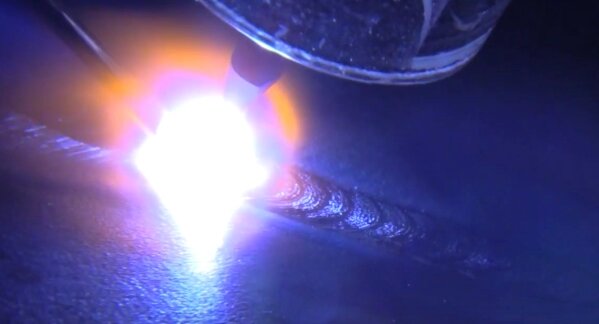
Materials Best Suited for Backstep Technique
Backstep welding is especially useful for metals that tend to warp or crack when exposed to high heat. This method helps spread heat more evenly, reducing stress and keeping parts straight during welding.
Carbon Steel
Carbon steel is common in structural and general fabrication work. It’s easy to weld but can warp during long welds or when using thin sheets.
Backstep welding works well here. It lowers the chance of warping by breaking the weld into smaller steps. This helps maintain accuracy and keeps the part aligned.
The technique is effective for both low and medium-carbon steel. It produces cleaner welds with less distortion, especially on sheet metal or long seams.
Stainless Steel
Stainless steel changes shape more during heating and cooling. It expands more than carbon steel and also holds heat longer. This makes it more likely to warp or discolor.
Backstep welding reduces those risks. It spreads heat out, which helps prevent warping and limits heat marks.
This is a good method for thin stainless parts or polished surfaces where appearance matters. It helps keep the surface flat and avoids overheating thin areas.
Aluminum
Aluminum is more difficult to weld. It heats up fast, melts at a lower temperature, and needs clean surfaces because of its oxide layer.
Backstep welding can work for aluminum, but it must be done carefully. Too much heat or overlap can cause holes or burn-through.
For best results, welders should use short steps, lower heat, and steady gas coverage. This helps control heat and protects the weld from contamination.
Step-by-Step Backstep Welding Method
Following a clear process helps you get the best results with backstep welding. Each step controls heat and reduces the risk of part movement or weld defects.
Step 1: Joint Preparation
Start with clean, well-fit parts. Remove rust, oil, paint, and oxide layers from the joint area. Use a wire brush, grinder, or solvent cleaner.
Clamp the parts securely to reduce shifting during welding. Tack welds should be placed at regular intervals. These hold the parts in place and resist pulling forces from the weld.
Step 2: Planning the Weld Sequence
Mark out the welding direction and each segment step. Use chalk or a scribe to space your welds evenly.
Decide how long each weld segment will be. For thin sheet metal, 1 to 2 inches is common. The overall weld direction should be forward, but each segment is done in reverse.
Step 3: Begin the First Weld Segment
Start at the second-to-last position in your sequence. Weld backward toward the previous mark.
Make a clean, controlled weld. Keep the travel speed steady. Use proper technique to avoid an undercut or overlap. Let the weld cool slightly before moving to the next step.
Step 4: Continue with the Next Segment
Move forward to the next planned spot. Begin welding back toward the previous weld bead.
Each new segment should slightly overlap the last one. This creates a continuous joint and improves strength. Repeat this pattern until the entire joint is complete.
Step 5: Check for Distortion or Misalignment
After the weld cools, inspect the part for signs of warping or pulling. Use a straightedge, caliper, or visual checks.
If there is minor distortion, apply clamps or gentle heat correction. For critical parts, you may need to re-fix the fixture and make slight adjustments during welding.
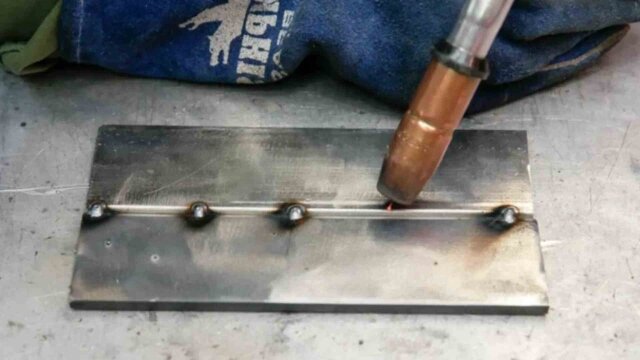
Why Choose Backstep Welding?
This technique solves common welding problems. It gives better results in thin materials and tricky joints.
Less Distortion and Warping
Heat makes metal expand and bend. Backstep welding spreads heat evenly. You weld small sections at a time, cooling between passes. This reduces the pull that causes warping.
- Works well on sheet metal under 1/8 inch thick.
- Keeps large panels flat during fabrication.
- Saves time on straightening after welding.
Stronger Welds with Fewer Weak Spots
Continuous welds can crack from stress. Backstep welding overlaps short beads. This makes the joint more even.
- No long, weak heat-affected zones.
- Better fatigue resistance in moving parts.
- Fewer cracks in corrosion-prone metals.
Easier Control on Tricky Joints
Some welds need careful heat management. Backstep welding lets you adjust as you go.
- Works for tight spaces where full passes won’t fit.
- Helps when welding uneven gaps.
- Good for out-of-position welds (vertical/overhead).
What Are the Drawbacks of Backstep Welding?
While useful, this method isn’t perfect for every job. Here’s when to think twice before using it.
Not the Best Choice for Thick Materials
Backstep welding shines with thin metal. But it loses its edge on thicker pieces.
- Heat control benefits fade past 1/4 inch thickness
- Becomes slower than continuous welding on heavy plate
- Can create excessive overlap zones in multi-pass welds
Takes Practice to Master
This isn’t a beginner-friendly technique. It demands good coordination and heat management.
- Requires precise hand movements for consistent overlaps
- Harder to learn than straight-line welding
- Needs practice to judge proper segment length
Applications Across Industries
Backstep welding is used in many fields where precision, strength, and part alignment matter. It helps maintain quality, especially in large or thin assemblies.
Structural Steel Fabrication
In building construction, steel frames and beams must stay straight. Warped members can affect alignment, load handling, and safety. Backstep welding is used to weld long seams in I-beams, plates, and stiffeners. It keeps distortion low and joints tight.
Shipbuilding
Ship hulls and large machine frames use thick plates and long weld seams. These parts are prone to pulling and movement during welding. Backstep welding reduces stress and helps align large panels. This is useful for decks, bulkheads, and stiffened assemblies.
Aerospace
Aircraft and auto parts often use thin metals and tight tolerances. Backstep welding helps control heat and reduce warping. It’s used in frames, panels, brackets, and precision assemblies. The technique supports both manual and automated welding.
Tips and Best Practices
Backstep welding delivers great results when done with care. Applying a few practical tips can help improve control, reduce waste, and maintain weld quality across the job.
Controlling Heat Input
Controlling heat is key to reducing distortion and preventing defects. With backstep welding, the heat must be managed in small, controlled zones.
Use short weld segments—typically around 1 to 2 inches—depending on material thickness. This keeps heat localized and avoids excessive buildup in one area.
Use the lowest effective amperage for your process and material. Lower settings reduce input heat while still providing good penetration. Allow time between segments for the metal to cool slightly. You don’t need to pause for long, but even a few seconds helps stabilize the area.
Avoid weaving when it’s not necessary. A tight, straight pass generates less heat and is easier to control. If wider coverage is needed, weave slowly and evenly without lingering.
Maintaining Consistent Bead Quality
Keep your torch angle, arc length, and speed steady throughout each pass. Sudden changes lead to uneven beads or defects like an undercut or overlap. Start each weld segment with a small pause to establish the arc, then move smoothly through the bead.
Overlap each segment by about 25% of the previous weld. This helps form a continuous joint without cold starts or gaps. Use proper electrode size and filler metal for your material. Mismatched filler can cause poor fusion or brittle joints.
Clean the base metal before each weld. Oil, paint, or oxidation will weaken the weld and make consistency harder to maintain.
Conclusion
Backstep welding is a simple yet powerful method that helps reduce distortion, control heat, and improve weld quality—especially for thin metals and long seams. Working in short, reverse segments keeps parts flat and joints strong. It’s useful in structural steel, shipbuilding, aerospace, and more.
Need precision welding for your next project? Contact us to discuss your requirements and get fast, professional support tailored to your needs.
Hey, I'm Kevin Lee

For the past 10 years, I’ve been immersed in various forms of sheet metal fabrication, sharing cool insights here from my experiences across diverse workshops.
Get in touch

Kevin Lee
I have over ten years of professional experience in sheet metal fabrication, specializing in laser cutting, bending, welding, and surface treatment techniques. As the Technical Director at Shengen, I am committed to solving complex manufacturing challenges and driving innovation and quality in each project.


